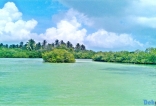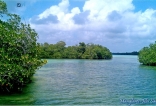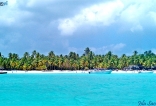Parque Nacional del Este, Bayahibe Boca de Yuma
It is a nature reserve of incalculable value that is located in the southwestern region of the Dominican Republic. With a total length of 791 km square, including Isla Saona and Catalinita Cayo. It represents a place of great importance for the country, Since it is home to thousands of species of endemic flora and fauna of this region. It is the second of the country's largest protected area.
According to Holdridge classification, project for the classification of different land areas by bioclimatic overall performance. National Park of the East are distinguished three life zones: Subtropical humid Bosque, Subtropical dry forest. And forest of transition between the previous two. They have been so far in the 112 bird species, corresponding half the species existing in the country. Of that total, 8 species are endemic to the island and 11 species endemic to the area of the Caribbean.
Among the most representative area plant species are. The guáyiga (Zamia debilis), Copey (Clussia rosea), nursery (Bursera simaruba), Cambron (Prosopis juliflora), grape Beach (Coccoloba uvifera), GRI-gri (Bucida buceras), Mahogany (Swietenia mahagoni), Red mangrove (Rhizophora mangle), and other.
Meanwhile fauna of this park is represented by mammals like. solenodonte(Solenodon paradoxus), the Guinea pig(Plagiodontia aedium), the Manatee (Trichechus manatus) and the dolphin (Turisops truncatus). Several species of reptiles have been reported, among them: the turtle and the rhinoceros iguana(Cyclura cornuta).
Among the species of birds that are found here are the Dove Corona(Columba leucocephala), the Parrot(Amazona ventralis). The Pelican or alcatraz (Pelecanus occidentalis), the bubi (Sula sula), the fork-tailed Flycatcher (Fregata magnificens), the OWL (Tyto alba) and the Seagull (Larus argentatus).
To take a tour of its thick vegetation on the shores of the Caribbean Sea visitors. You will find numerous caves adorned with pictographs, archaeological remains of the Taino culture. And petroglyphs, underground springs, mangroves with a significant biodiversity and a large expanse of coast yet to explore.
Among the caves most known is the Cueva del Puente, characterized by its large size large "rooms" in its interior and a monumental tree. Ancestral to that goes beyond its ceiling as who seeks the sunlight to survive. Guy cave visitors can enjoy a refreshing swim. Underground waters, or if you prefer, to rise to the surface, Immerse yourself in one of the beaches. Most spectacular nationwide, What ever your decision, will be an unsurpassed experience.











Designer Comment
Within the National Park of the East three life zones are distinguished, according to the Holdridge classification: Subtropical Humid Forest, Subtropical Dry Forest and Transition Forest between the previous two. Among other, the most representative species are the beach grape and the bayahonda, just like mahogany.